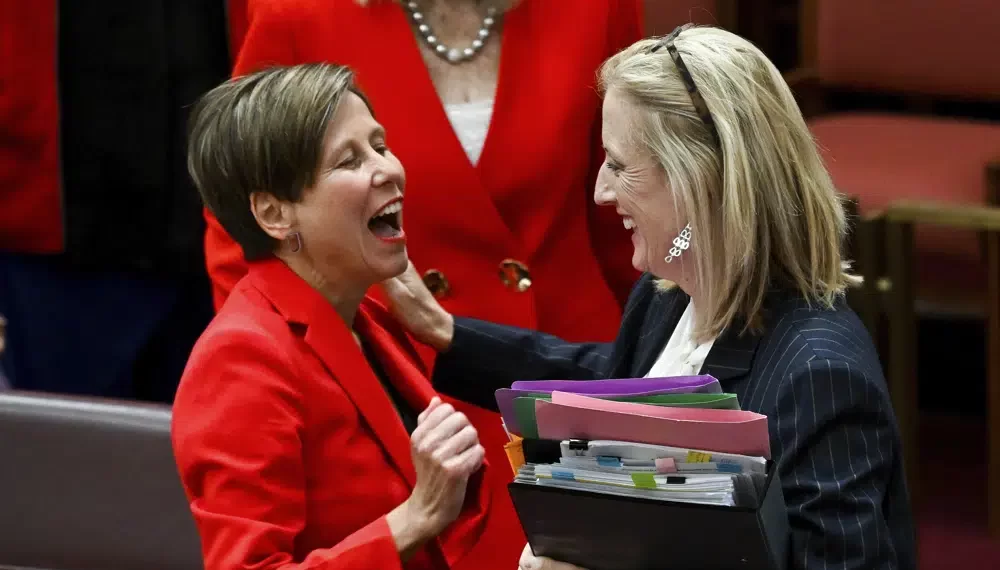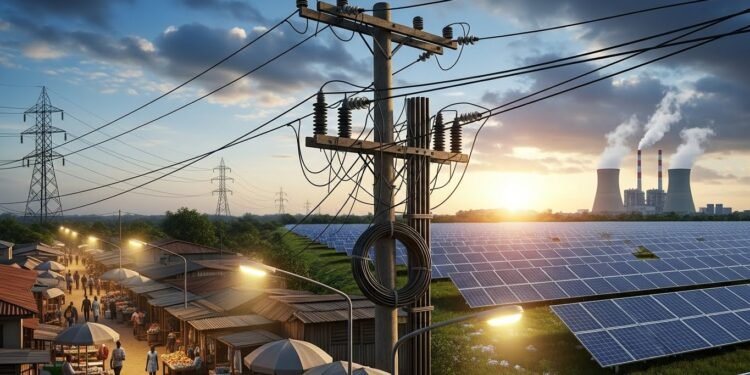The Australian Parliament created new laws on Thursday, March 30, 2023, that will make the nation’s biggest greenhouse gas polluters reduce their emissions or pay for carbon credits.
The center-left Labor Party administration said the so-called Safeguard Mechanism reforms are essential to Australia reaching its target of reducing its emissions by 43% below 2005 levels by the end of the decade and net-zero emissions by 2050.
Set to take effect by July 1, 2023, the reforms create a ceiling on the nation’s emissions and force Australia’s 215 most polluting facilities to reduce their emissions by 4.9% a year or reach the target with carbon credits.
The laws create Australia’s first price on carbon since a former Labor government created a carbon tax in 2012. A conservative government repealed that tax in 2014 and has since rejected any climate policies that would make polluters pay.
The Senate passed the bill on Thursday by a vote of 32 to 26, with Labor senators supported by the minor Greens party and unaligned legislators.
The Liberal Party and the Nationals party, which formed the conservative coalition government that was voted out of office in 2022 after almost a decade in power, opposed the legislation.
Opposition climate change and energy spokesperson, Ted O’Brien opined that capping emissions would drive Australian industrial investment offshore to China and India while increasing costs for Australians.
“This is a tax that will see prices go up in the midst of a cost of living crisis where every household across this country is feeling the pain of prices going up,” O’Brien told Parliament, referring to unusually high inflation and interest rates in Australia.
The government argues that without the mechanism, Australia would only reduce its emissions by 35% by the end of the decade.
Emissions will not be able to exceed Australia’s current pollution level of 140 million metric tons (154 million U.S. tons) a year, and that cap will decrease over time.
Big polluters would be able to buy carbon credits to help achieve their emission reduction targets, but polluters that use carbon credits to achieve more than 30% of their abatement would have to explain why they were not doing more to reduce their own emissions.
The reforms would reduce Australia’s greenhouse gas emissions by 205 million metric tons (226 million U.S. tons) by 2030, equivalent to taking two-thirds of Australia’s cars off the road in the same time, the government said.
Legislation Puts Australia On A Realistic Path To Net-Zero Emissions

Prime Minister Anthony Albanese stated that his party was voted into power at 2022 elections to take action on climate change.
“Today’s a big step toward repaying that faith,” Albanese told Parliament.
“Passing this legislation has put Australia on a realistic path to net-zero emissions by 2050 and a 43% reduction by 2030.”
Prime Minister Anthony Albanese
The previous government had set a less ambitious target of reducing Australia’s emissions by 26% to 28% below 2005 levels by 2030.
The Climate Council, a leading climate communicator, described the reforms as the first Australian legislation in a decade that would regulate greenhouse gas pollution.
The Australian Petroleum Production and Exploration Association, which represents oil and gas producers, argued that the reforms make it harder for gas to be used to transition Australia away from more harmful coal and provide reliable backup for renewable energy.
The conservative parties created the Safeguard Mechanism when they were in power in 2016. However, the emission limits were so high that the 215 major polluters, which account for almost 30% of Australia’s emissions, were able to increase their emissions by 4%.
READ ALSO: Russia Halts Sharing Of Missile Test Information With U.S























